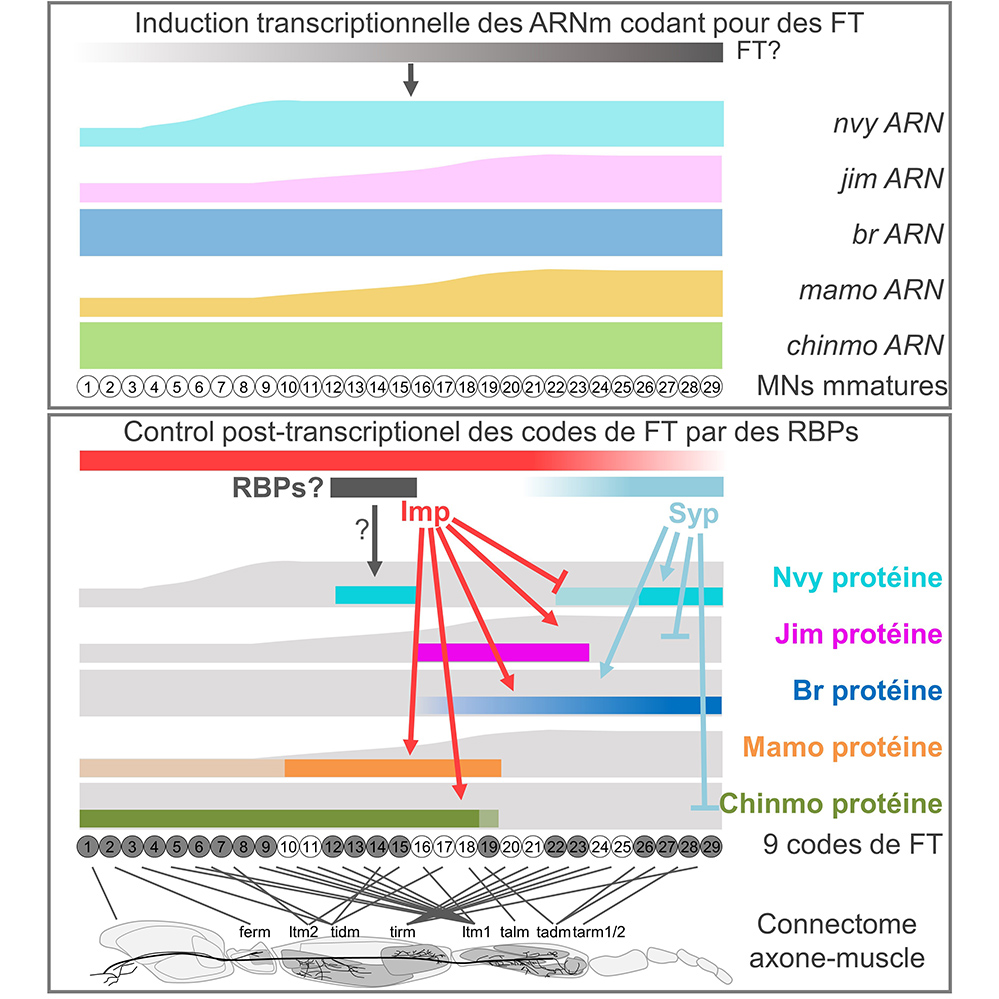Publication of the IGFL in the journal Cell Reports on June 28, 2022. CNRS-INSB communication on July 8, 2022.
How the vast array of neuronal diversity is generated remains an unsolved problem. Here, we investigate how 29 morphologically distinct leg motoneurons are generated from a single stem cell in Drosophila. We identify 19 transcription factor (TF) codes expressed in immature motoneurons just before their morphological differentiation. Using genetic manipulations and a computational tool, we demonstrate that the TF codes are progressively established in immature motoneurons according to their birth order. Comparing RNA and protein expression patterns of multiple TFs reveals that post-transcriptional regulation plays an essential role in shaping these TF codes. Two RNA-binding proteins, Imp and Syp, expressed in opposing gradients in immature motoneurons, control the translation of multiple TFs. The varying sensitivity of TF mRNAs to the opposing gradients of Imp and Syp in immature motoneurons decrypts these gradients into distinct TF codes, establishing the connectome between motoneuron axons and their target muscles.

Schematics showing the expression patterns of RNAs and transcription factor (TF) proteins expressed in moteneurones (MNs) according to their birth order, as well as their post-transcriptional regulation by RNA binding proteins (RPBs). The link between each immature MN and the muscle it innervates in the adult paw is shown at the bottom of the figure.
Illustration and figure credits: Jonathan Enriquez
Reference: Post-transcriptional regulation of transcription factor codes in immature neurons drives neuronal diversity. Guan W, Bellemin S, Bouchet M, Venkatasubramanian L, Guillermin C, Laurençon A, Kabir C, Darnas A, Godin C, Urdy S, Mann RS, Enriquez J.. Cell Rep., June 28, 2022.
DOI : https://doi.org/10.1016/j.celrep.2022.110992






